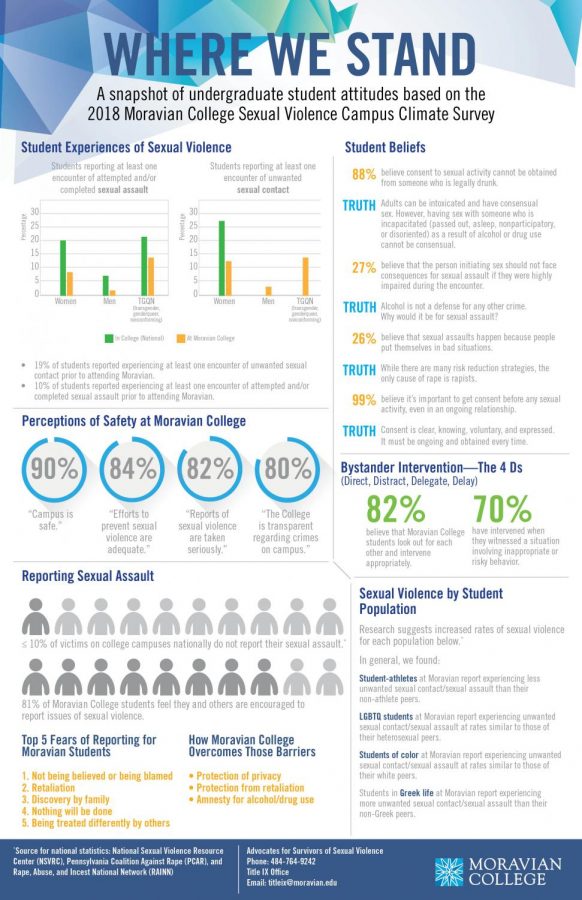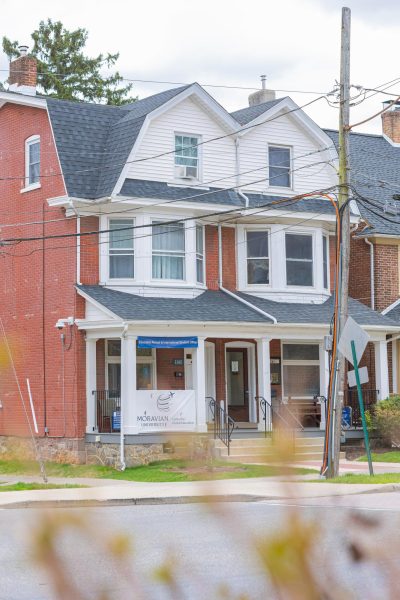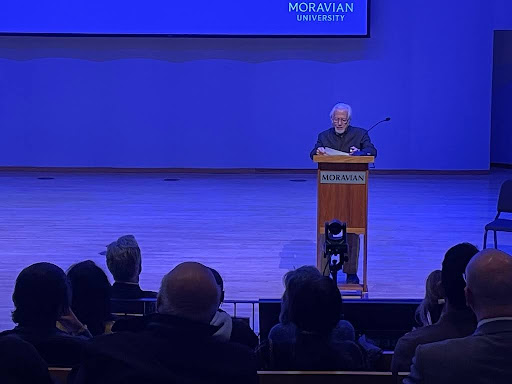MoCo Surveys Students About Sexual Violence on Campus
Moravian College sent out an infographic detailing the College’s standing with national sexual assault statistics on February 16. The infographic breaks down Moravian’s statistics of sexual violence and compares them to that of the national average.
To better understand the information it presented, we spoke to Leah Breisch, Title IX director and creator of the infographic.
How was this study conducted?
We are not “required” to do a climate survey under VAWA [the Violence Against Women Act], but doing one is a professional best practice (recommended by the Association of Title IX Administrators) to more effectively meet the requirements of VAWA. When I got here there wasn’t any data on sexual assault. In my second year, we said, “Let’s get some data.” In my third year we tried to perfect the study.
We didn’t have a budget. So I decided to design one myself based on other models [from other institutions]. I worked with [director of Institutional Research] Sharon Maus. Before we looked for different formats and themes, I identified a couple of campus stakeholders who I knew were interested in tackling sexual assault on campus. I asked them what 3 to 5 things they want students to be asked on the survey. We looked at the five models and tried to change the language and questions to fit Moravian. We wanted it to be anonymous, so we had to think what information we could ask about demographics that would help us get population-specific snapshots.
How many people took the survey?
We have a survey tool on Qualtrics, and we had to make a decision about who to survey. Sharon identified all the students in our system who were undergrad, either part-time or full-time. We had 1,743 possible students and 683 [about 40%] of students took it. I sent it via a direct email distribution list to all students with a link to the survey.
Is this a good representation of our overall climate?
Yes, we tried to look at it to compare it with our data on demographics. But I will say the gender ratio was a little off. When Sharon administers institutional surveys, we know women are more likely to take it than men, but I think because the nature of the survey is sexual assault and women are more likely to experience that, the results were skewed, with about 72% female, 27% male, and around 1% trans/nonbinary gender distribution.
What did you learn from the survey results?
It reinforced to me that overall our students are having [fewer] experiences of sexual assault on our campus than the national average. A large majority of students feel safe on our campus, and if they need to report, they feel comfortable doing so. I think the survey reports that our campus supports a culture of reporting and shows that our students feel safe in doing so.







